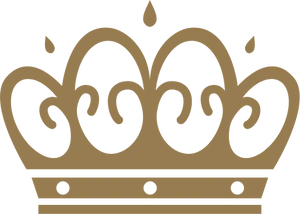Ovulation Calculator: Unlocking Fertility
For couples trying to conceive, understanding the female reproductive cycle is crucial. Ovulation, the release of an egg from the ovary, is a key event in this cycle, and pinpointing it accurately can significantly increase your chances of getting pregnant. This is where an ovulation calculator comes into play. In this blog, we'll explore what ovulation is, why it's important, and how an ovulation calculator can be your ally on the journey to parenthood.
What Is Ovulation?
Ovulation is a natural process that occurs in the female body, usually once a month. It marks the release of a mature egg from one of the ovaries, which then travels down the fallopian tube, waiting for a sperm to fertilize it. If fertilization occurs, it can lead to pregnancy.
Understanding the Female Reproductive Cycle
To harness the power of an ovulation calculator, it's essential to understand the female reproductive cycle. The menstrual cycle can be divided into three main phases:
-
Menstruation: This is the bleeding phase, where the uterus sheds its lining. It typically lasts 3-7 days.
-
Follicular Phase: This phase begins on the first day of your period and can last around 13-14 days. It's during this phase that your body prepares for ovulation by stimulating the growth of follicles (fluid-filled sacs in the ovaries), one of which will release an egg.
-
Luteal Phase: After ovulation, the empty follicle transforms into a structure called the corpus luteum. This phase usually lasts around 12-16 days. If fertilization doesn't occur, the corpus luteum breaks down, and the cycle starts over.
Why Is Knowing Your Ovulation Date Important?
Identifying your ovulation date is crucial for couples trying to conceive because it's the window of opportunity for fertilization. Sperm can survive in the female reproductive tract for up to five days, while the egg remains viable for around 12-24 hours after ovulation. This means that having intercourse in the days leading up to ovulation can result in pregnancy.
How Does an Ovulation Calculator Work?
An ovulation calculator, also known as an ovulation predictor kit (OPK) or fertility calculator, helps predict your fertile window. Here's how it works:
-
Cycle Length: You input your average menstrual cycle length, which is the number of days between the first day of one period and the first day of the next.
-
Last Menstrual Period (LMP): You provide the date of your last menstrual period.
-
Ovulation Prediction: The calculator uses these inputs to estimate when you're likely to ovulate in your current cycle. It typically predicts ovulation to occur 14 days before the start of your next period, based on the average 28-day cycle.
-
Tracking Symptoms: Some calculators allow you to track ovulation symptoms like changes in cervical mucus, basal body temperature, or abdominal discomfort.
Benefits of Using an Ovulation Calculator
-
Precision: Ovulation calculators provide a more accurate prediction of your fertile window compared to a standard calendar method.
-
Time-saving: They can save you time by narrowing down the best days for intercourse, increasing your chances of conception.
-
Empowerment: Knowing when you're most fertile empowers you to take control of your reproductive health.
-
Reduced Stress: Predicting ovulation can reduce the stress and anxiety that often accompanies trying to conceive.
Conclusion
For couples hoping to start or expand their family, an ovulation calculator is a valuable tool that can help demystify the complexities of the female reproductive cycle. By understanding your ovulation date and fertile window, you can enhance your chances of conceiving naturally. Remember that while an ovulation calculator is a useful resource, it's always a good idea to consult with a healthcare professional if you encounter any challenges or have concerns about fertility. Ultimately, your journey to parenthood is unique, and having the right knowledge and tools can make the road smoother and more enjoyable.

Festive Ideas & Tips for Baby and Bump This Winter

All About Baby Poo: A New Parent's Guide

Top Baby Essentials: From Formula Milk to Diaper Brands

Kendamil vs. Aptamil: Which Follow-On Formula is Better?

Tips for Relieving Constipation in Babies

Tips for Feeding Baby While Travelling

Stay Cool: Summer Pregnancy Tips for Beating the Heat

Benefits of Tummy Time and How to Get Started

Understanding Your Baby's Cues: Hunger Signs and Feeding Frequency

New Parents: A Step-by-Step Guide to Well-Being

Tips for Keeping Babies Comfortable in the Heat

How to Stop Baby Hiccups: Home Remedies and Techniques

How to Master the ‘4-Month Sleep Regression’

How to Prepare For Bringing Baby Home

What to Expect from Your Midwife Appointments

Maternal Mental Health: A Guide for New Mothers

How to Deal with Picky Eater Toddler: 10 Tips for Parents

Baby Water Safety: Advice for Parents

How To Create A Calming Bedtime Routine for Babies

Confused by Nutrition Labels? Discover the Ultimate Parent's Guide to Healthy Food Choices!

7 Major Impacts of Excessive Screen Time on Children's Health and Development

10 Veggies for Baby First Food Ideas

How to Prevent Your Child From Choking: A Guide to Introducing Solid Foods

How to navigate the newborn phase

Navigating Screen Time: Finding Balance with iPads and Kids

Nurturing Healthy Growth: Understanding Your Toddler's Milk Intake Needs

Formula Milk Handling: How Long Can Formula Milk Sit Out and More

Baby-Led Weaning vs. Traditional Weaning: Toddler Nutrition

Nurturing Toddlers: Kendamil Formula - An In-Depth Guide for Parents

Little Bearnie: Crafting Unique Moments for Little Ones with Love

Helping a teething baby

Baby teething: All you need to know

Folic Acid: Everything You Need to Know

Choosing the right baby formula

12 Baby friendly activities in Singapore

15 baby friendly and toddler friendly restaurants in Singapore

Kendamil Supports Jamie Oliver Campaign To Maintain British Food Standards

Kendamil Wins GOLD Award Voted On By UK Mums (And Babies!)

